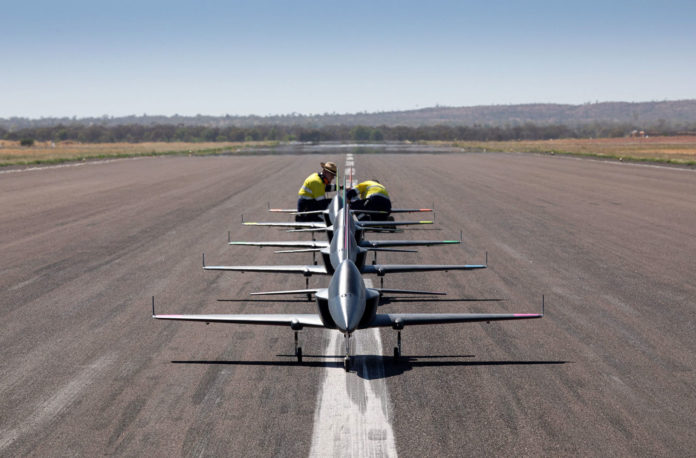The American aircraft manufacturer Boeing recently completed flight tests with five high-performance surrogate jets operating autonomously in a team at the new Queensland Flight Test Range in Cloncurry, Australia. The five aircraft took off, completed various formations, and landed autonomously as part of the test mission.
The developers believe that artificial intelligence systems on military equipment will reduce operators’ burden and significantly reduce losses. In particular, it is assumed that groups of smart drones will be able to conduct reconnaissance or strike at enemy positions in closed airspace protected by air defense systems.
“The tests demonstrated our success in applying artificial intelligence algorithms to ‘teach’ the aircraft’s brain to understand what is required of it,” said Emily Hughes, director of Phantom Works International. “The data link capabilities enabled the aircraft to communicate with the other platforms so that they could collaborate to achieve a mission.“
Boeing’s advanced autonomy technology, including onboard command and control and data sharing capabilities, was tested using the 3.4-meter (11-foot) aircraft. Testing lasted ten days, with aircraft incrementally added until the five operated together. During testing, the jet reached speeds of 270 kilometers (167 miles) per hour. “With the size, number, and speed of aircraft used in the test, this is a very significant step for Boeing and industry in the progress of autonomous mission systems technology,” Hughes said.
The researchers initially started with two aircraft and added a further autonomous jet model to each subsequent flight until the planned five copies flew together. In the air, the drones exchanged data with each other, assigned roles in the group. The developers also note that the seasoned drones trained the vehicles that had just joined the group.
The activity was the final milestone delivered in partnership with the Queensland government as part of Boeing’s Advance Queensland Autonomous Systems Platform Technology Project. The project is being conducted to develop onboard autonomous command and control technology that can gather data, process it, and communicate with other machines to complete programmed missions. These systems are also designed for use in robotic quadcopters and larger jet aircraft.
